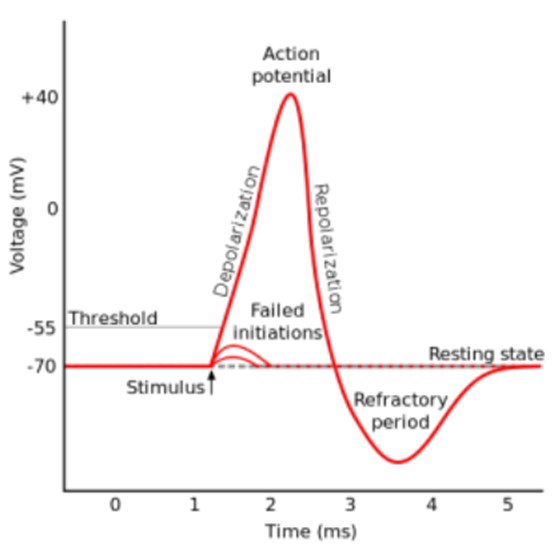Which of the following can lead to a tsunami?
Sunspot activity.
Lightning strikes.
Earthquakes.
Flooding.
The Correct Answer is C
It can also be caused by an underwater or coastal landslide, the eruption of a volcano, or the impact of a meteor or comet in a body of water.
Choice A is not correct because sunspot activity does not cause tsunamis.
Choice B is not correct because lightning strikes do not cause tsunamis. Choice D is not correct because flooding does not cause tsunamis.
Nursing Test Bank
Naxlex Comprehensive Predictor Exams
Related Questions
Correct Answer is A
Explanation
The threshold potential is the critical level to which a membrane potential must be depolarized to initiate an action potential.
Most often, the threshold potential is a membrane potential value between –50 and –55 mV.

The membrane potential of a neuron is determined by the distribution of ions across the cell membrane.
At rest, the inside of a neuron is more negative than the outside due to the presence of negatively charged proteins and other molecules.
The movement of ions across the cell membrane can change the membrane potential.
For example, when sodium ions enter the cell, they make the inside of the cell more positive (less negative), causing depolarization.
Choice B is incorrect because -80 mV is below the typical threshold value for mammalian neurons.
Choice C is incorrect because +35 mV is above the typical threshold value for mammalian neurons.
Choice D is incorrect because 0 mV is above the typical threshold value for mammalian neurons.
Correct Answer is A
Explanation
Melanin is a pigment produced by cells called melanocytes in the skin.
It protects the skin from ultraviolet (UV) radiation by absorbing and dissipating over 99.9% of absorbed UV radiation.
This helps to prevent DNA damage and other adverse effects of UV radiation on the skin.
Choice B. Perspiration is not correct because it is a fluid produced by sweat glands in the skin that helps to regulate body temperature, but it does not protect the skin from UV radiation.
Choice C. Sebum is not correct because it is an oily substance produced by sebaceous glands in the skin that helps to lubricate and protect the skin, but it does not protect the skin from UV radiation.
Choice D. Keratin is not correct because it is a fibrous protein that provides strength and durability to the skin, hair and nails, but it does not protect the skin from UV radiation.
Whether you are a student looking to ace your exams or a practicing nurse seeking to enhance your expertise , our nursing education contents will empower you with the confidence and competence to make a difference in the lives of patients and become a respected leader in the healthcare field.
Visit Naxlex, invest in your future and unlock endless possibilities with our unparalleled nursing education contents today
Report Wrong Answer on the Current Question
Do you disagree with the answer? If yes, what is your expected answer? Explain.
Kindly be descriptive with the issue you are facing.
